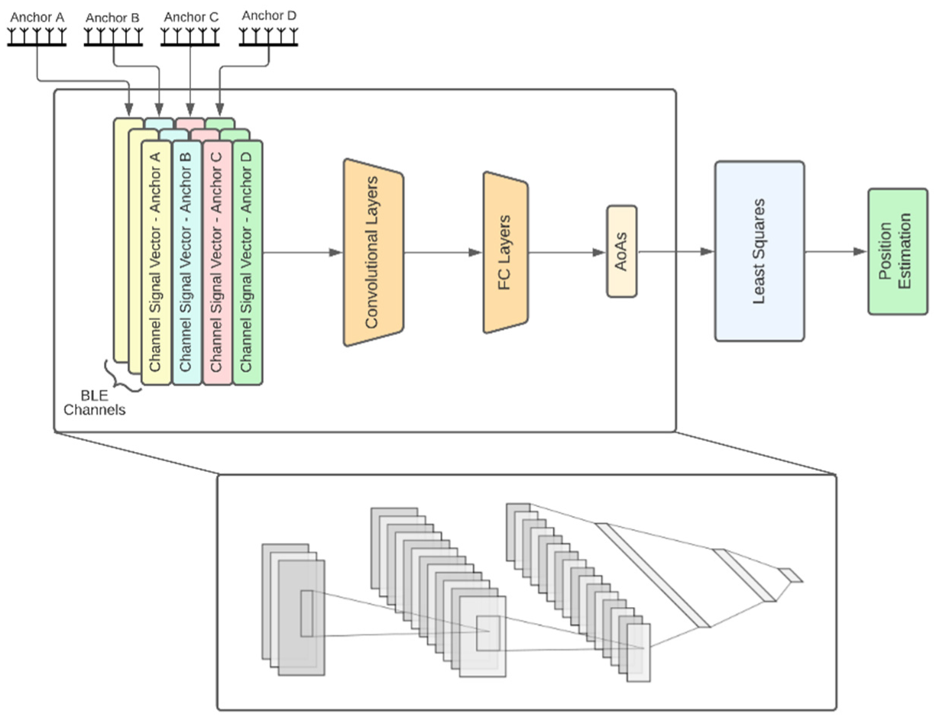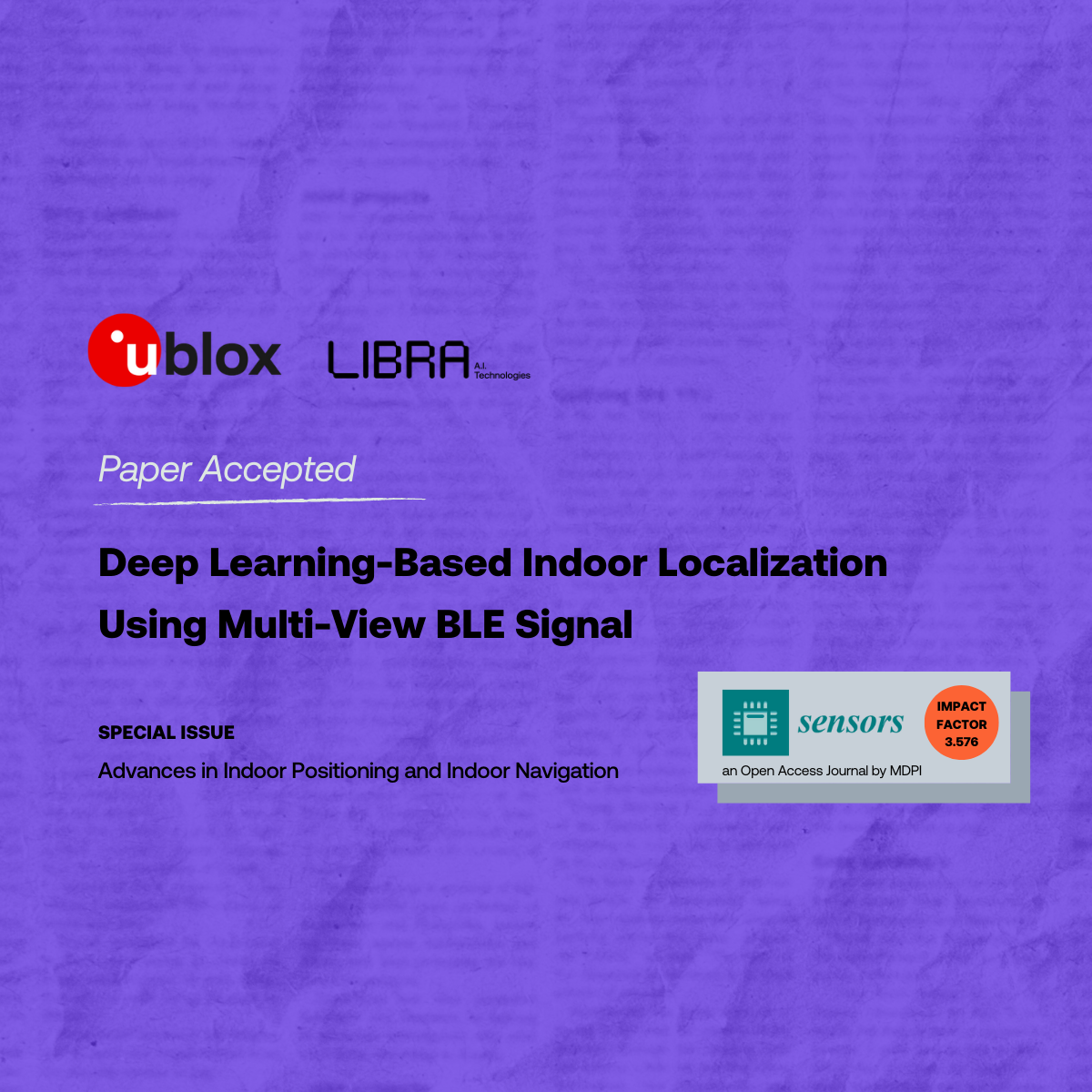Indoor positioning system (IPS) technologies are on the rise over the last decades due to high industrial and domestic demand. Use cases range from indoor navigation (e.g., in hospitals, office buildings, university campuses, airports, etc.) to object localization (e.g., packets in a warehouse, household items, etc.). A variety of indoor positioning systems have been developed, most of them utilizing radio signals such as ultra-wideband (UWB), Wi-Fi or Bluetooth. Among these technologies, Bluetooth Low Energy (BLE) has emerged as an affordable mass market alternative due to reasons related to reduced energy consumption and the ease of deployment and compatibility with a multitude of devices.
The recently published LIBRA AI Technologies research paper, entitled "Deep Learning-Based Indoor Localization Using Multi-View BLE Signal", is a result of a data science-as-a-service contract with U-BLOX during which our team investigated the potential of deep neural networks in BLE-based indoor positioning and Angle of Arrival (AoA) estimation.
It has to be noted that AoA-based neural network localization approaches exist but have so far been scarce. There are, however, successful applications of NN-based AoA estimation of single Anchor Points (APs), using as features IQ values, MUSIC generated spatial power spectrum features and exploitation of the temporal domain, or PDDA generated power spectrum features.
The main contributions of the paper, published in Sensors, MDPI journal, one of the top three journals with the highest impact factor (3.57) in the field, include:
- ML-powered BLE-based indoor positioning via multiple anchors AoA estimation using both raw IQ values and RSSI estimates is proposed for the first time;
- A range of novel deep learning architectures, including fully connected multilayer perceptrons and CNNs, are proposed and studied regarding their pros and cons;
- Joint anchor AoA estimates allowing distributed processing across the anchors is studied, to the best of our knowledge, for the first time. In particular, tuples of APs are grouped in smaller models that are then combined to produce the final prediction. Thus, hardware for a single computational expensive unit is replaced by less computationally demanding units distributed among the APs, facilitating embedded implementations;
- It is shown that deep learning methods yield robust indoor localization generalization, given environmental changes, e.g., different LOS-blocking obstacles and altered AP arrangements. To the best of our knowledge, no other study for indoor localization based on machine learning evaluates the generalizability of its models in different environments than the ones used in training;
- A data augmentation strategy is introduced that allows for reducing the training data size with minimal impact on performance. The performance improvement potential of joint anchor estimates vs single anchors is also studied;
- A novel high spatial resolution dataset with multiple furniture configurations produced with realistic ray-tracing simulations is provided in open access mode.
In summary, the presented method estimates the position of a Bluetooth Low Energy (BLE) transmitter (tag) by using the received signals’ characteristics at multiple Anchor Points (APs).
The authors use the received signal strength indicator (RSSI) value and the in-phase and quadrature-phase (IQ) components of the received BLE signals at a single time instance to simultaneously estimate the angle of arrival (AoA) at all APs. Through supervised learning on simulated data, various machine learning (ML) architectures are trained to perform AoA estimation using varying subsets of anchor points. In the final stage of the system, the estimated AoA values are fed to a positioning engine that uses the least-squares (LS) algorithm to estimate the tag's position.

The proposed architectures are trained and rigorously tested on several simulated room scenarios and are shown to achieve a localization accuracy of 70 cm. Moreover, the proposed systems possess generalization capabilities by being robust to modifications in the room’s content or anchors’ configuration. Additionally, some of the proposed architectures have the ability to distribute the computational load over the APs.
The full paper is available at: https://www.mdpi.com/1424-8220/22/7/2759. The set of high-quality data and the Machine Learning models described in this paper are provided open, supporting reproducible research.
Congratulations to the LIBRA AI authors Aris Koutris and Theodoros Siozos (junior Data Scientists), Yannis Kopsinis (ML Architect and lead Data Scientist), and Prof. Aggelos Pikrakis (Scientific Advisor) for the novel AI architecture designs and implementations and the U-BLOX team consist of Timon Merk Matthias Mahlig, Stylianos Papaharalabos, Peter Karlsson for their constant support, fruitful brainstorming meetings, great ideas and knowledge expert tips.

